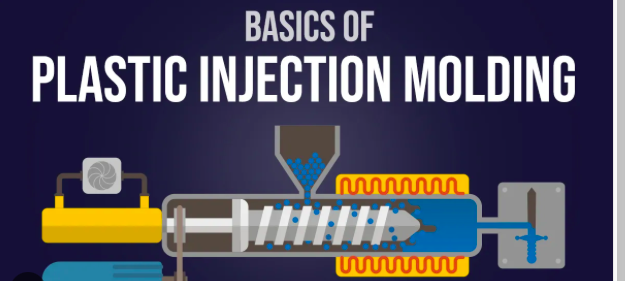Plastic injection molding has emerged as a groundbreaking technology that revolutionized the manufacturing industry. With its ability to produce complex and precise parts at a rapid pace, plastic injection has become the preferred method for creating a wide range of products. In this article, we will delve into the process of plastic injection molding, its advantages, applications, and its impact on various industries.
The Process of Plastic Injection Molding
Plastic injection molding involves the creation of three-dimensional objects by injecting molten plastic material into a mold. The process begins with the design and engineering of the mold, which is typically made from hardened steel or aluminum. The mold is then clamped shut, and the plastic material, usually in the form of pellets or granules, is melted and injected under high pressure into the mold cavity. After cooling and solidification, the mold is opened, and the finished product is ejected.
Advantages of Plastic Injection Molding
- Versatility: Plastic injection molding offers incredible versatility in terms of design and functionality. Complex shapes, intricate details, and varying thicknesses can be achieved with precision, allowing manufacturers to create products with intricate features that would be difficult or impossible to produce using other manufacturing methods.
- Efficiency: The high-speed production capability of plastic injection molding makes it a cost-effective manufacturing process. Once the mold is created, the cycle time for each part is relatively short, enabling large quantities of identical products to be manufactured in a short period. This efficiency translates into lower production costs, making it an attractive option for mass production.
- Material Selection: Plastic injection molding supports a wide range of plastic materials, including thermoplastics and thermosetting polymers. This versatility allows manufacturers to choose the most suitable material for each product, considering factors such as strength, flexibility, transparency, and resistance to chemicals or heat. The ability to work with various materials expands the possibilities for creating products with specific properties tailored to their intended applications.
Applications of Plastic Injection Molding
- Automotive Industry: Plastic injection molding plays a crucial role in the automotive industry, where it is used to manufacture interior and exterior components, such as dashboards, door panels, bumpers, and lighting fixtures. Its ability to produce lightweight yet durable parts makes it ideal for enhancing fuel efficiency while maintaining safety and aesthetic standards.
- Consumer Goods: Plastic injection molding has transformed the production of consumer goods. From household appliances and electronics to toys and packaging materials, this process enables the efficient and cost-effective manufacturing of a wide array of products that are part of our daily lives. A plastic injection molding company can help you with this.
- Medical Devices: The medical industry benefits significantly from plastic injection molding. It enables the production of precise and sterile components for medical devices and equipment, including syringes, inhalers, surgical instruments, and implantable devices. The ability to create complex geometries ensures the functionality and reliability of these critical healthcare tools.
- Aerospace and Defense: The aerospace and defense sectors also rely on plastic injection molding for the production of lightweight yet durable parts. The process enables the manufacturing of components used in aircraft interiors, avionics, satellite systems, and military equipment.
Impact on Sustainability
While plastic injection molding offers numerous advantages, it is essential to address its impact on sustainability. Plastic waste and environmental concerns are significant challenges associated with the extensive use of plastics. However, advancements in technology and growing awareness have led to the development of sustainable practices in the industry.
Manufacturers are increasingly adopting recycled or bio-based plastics, reducing material waste through improved designs, and implementing recycling initiatives. Additionally, efforts are being made to optimize the energy efficiency of plastic injection molding machines and reduce water consumption during the manufacturing process. These initiatives contribute to minimizing the environmental footprint associated with plastic injection molding.
Conclusion
Plastic injection molding has transformed the manufacturing landscape, enabling the creation of complex, precise, and cost-effective products across various industries. Its versatility, efficiency, and ability to work with a wide range of materials have made it the preferred choice for mass production. While sustainability remains a concern, the industry is actively working on implementing eco-friendly practices to minimize its impact on the environment. As technology continues to evolve, plastic injection molding is set to play an even more significant role in shaping the future of manufacturing.





























































